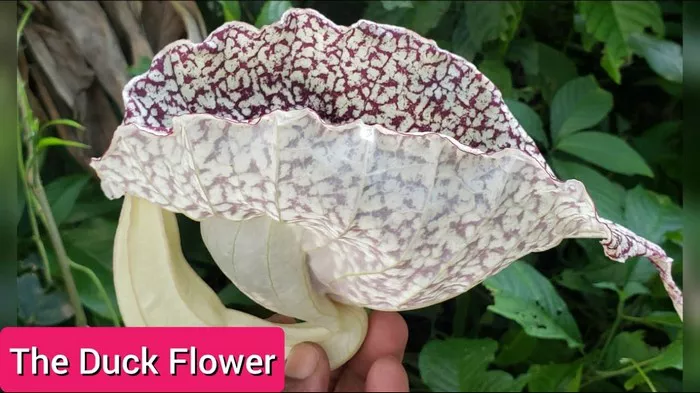Duck flower, scientifically known as Nematanthus wettsteinii, is a captivating plant renowned for its vibrant, duck-shaped blooms and lush foliage. Native to the rainforests of Brazil, this unique plant has gained popularity among plant enthusiasts for its ornamental value and ease of care. If you’re looking to add a touch of exotic beauty to your indoor garden or outdoor landscape, learning how to cultivate duck flower can be a rewarding endeavor. In this comprehensive guide, we’ll explore everything you need to know about growing and caring for duck flower.
Understanding Duck Flower:
Before delving into the specifics of cultivation, it’s essential to familiarize yourself with the characteristics of duck flower. Nematanthus wettsteinii belongs to the Gesneriaceae family and is characterized by its trailing stems, glossy leaves, and distinctive flowers that resemble miniature ducks in flight. The flowers come in a range of colors, including shades of orange, yellow, and red, adding a splash of tropical hues to any setting.
Choosing the Right Location:
When cultivating duck flower, selecting the optimal location is crucial for its growth and development. Duck flower thrives in bright, indirect light, making it ideal for placement near east or west-facing windows where it can receive ample sunlight without being exposed to direct rays. If you’re growing duck flower outdoors, choose a spot with partial shade to protect it from intense sunlight, especially during the hottest parts of the day.
Providing the Ideal Growing Conditions:
Creating the perfect environment is essential for the health and vitality of your duck flower. Here are some key factors to consider:
1. Temperature: Duck flower prefers temperatures ranging from 65°F to 75°F (18°C to 24°C) during the day and slightly cooler temperatures at night. Avoid exposing the plant to sudden temperature fluctuations or drafts, as this can stress the plant.
2. Humidity: Maintaining moderate humidity levels is beneficial for duck flower, especially in drier climates or indoor environments. You can increase humidity by misting the plant regularly or placing a humidifier nearby.
3. Soil: Choose a well-draining potting mix with a slightly acidic pH (around 6.0 to 6.5). A mix formulated for African violets or gesneriads is suitable for duck flower.
4. Watering: Keep the soil consistently moist but not waterlogged. Allow the top inch of soil to dry out slightly between waterings to prevent root rot. Water the plant at the base to avoid getting the foliage wet, which can lead to fungal diseases.
5. Fertilization: Feed your duck flower with a balanced liquid fertilizer diluted to half strength every 4-6 weeks during the growing season (spring to fall). Avoid fertilizing during the winter months when the plant is in dormancy.
Propagation:
Propagating duck flower is relatively straightforward and can be done through stem cuttings or division. Here’s how:
1. Stem Cuttings: Take 4-6 inch cuttings from healthy stems, ensuring each cutting has at least two leaf nodes. Remove the lower leaves and dip the cut end in rooting hormone before planting it in a moist potting mix. Keep the cuttings in a warm, humid environment until roots develop.
2. Division: Divide mature plants during repotting by carefully separating the root mass into smaller sections, ensuring each division has roots and foliage. Plant the divisions in individual pots with fresh potting mix and water thoroughly.
Pruning and Maintenance:
Regular pruning helps maintain the shape and appearance of your duck flower while promoting healthy growth. Remove any dead or yellowing leaves, as well as spent flowers, to encourage continuous blooming. Additionally, periodically check for pests such as aphids or mealybugs and treat them promptly to prevent infestations.
Common Issues and Troubleshooting:
Despite its relatively low maintenance requirements, duck flower may encounter some problems. Here are a few common issues and how to address them:
1. Yellowing Leaves: Yellow leaves can be a sign of overwatering, underwatering, or nutrient deficiencies. Adjust your watering schedule and ensure proper fertilization to address this issue.
2. Fungal Diseases: Excessive moisture or poor air circulation can lead to fungal diseases such as powdery mildew or leaf spot. Improve ventilation around the plant and avoid overhead watering to prevent these issues.
3. Pest Infestations: Keep an eye out for common pests like aphids, mealybugs, or spider mites. Use insecticidal soap or neem oil to treat infestations, taking care to follow the instructions on the product label.
Conclusion
Growing duck flower can be a delightful and rewarding experience for both novice and experienced gardeners alike. With the right care and attention to its needs, you can enjoy the beauty of its unique blooms and lush foliage year-round. By following the guidelines outlined in this comprehensive guide, you’ll be well on your way to cultivating healthy and vibrant duck flower plants in your home or garden.

